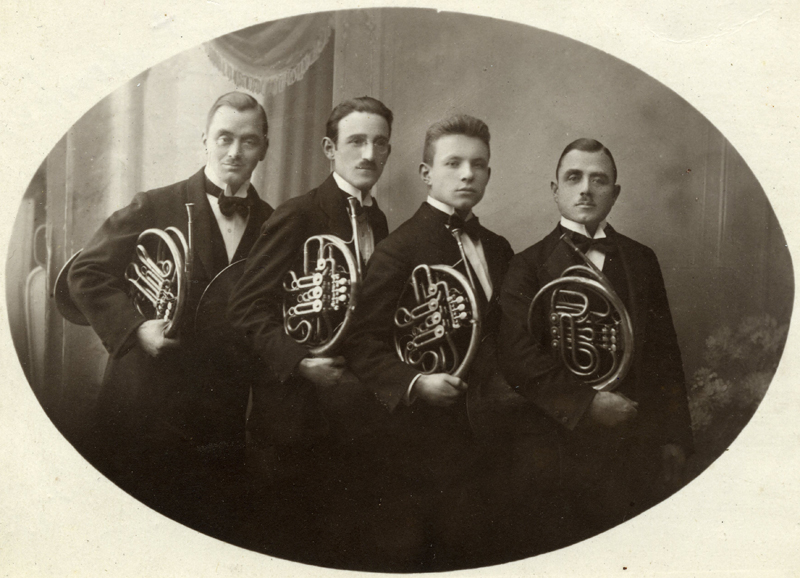
|
The four horn playere shown in the above photo have
not been identified. The hand-written date on the back
of the card is 9 September 1902 and the location is
Karlsbad, Bohemia.
The inscription on the back of the card identifies it
as a "Souvenir of your cousin, Karl,
Karlsbad, 9/9/02." Although it might appear at first
glance as "22", closer inspection of the date suggests
it is actually "02" (see detail below).
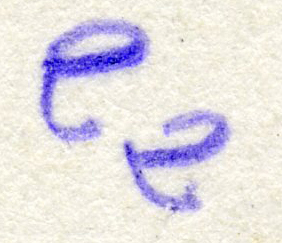
|
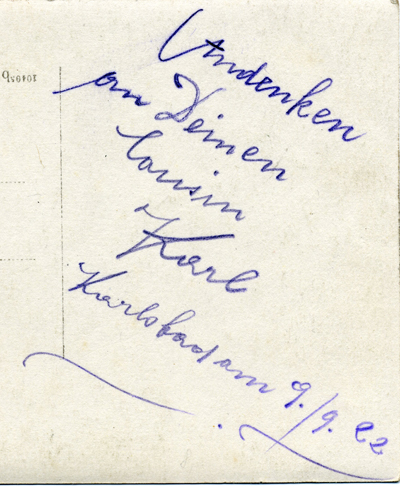
|
|
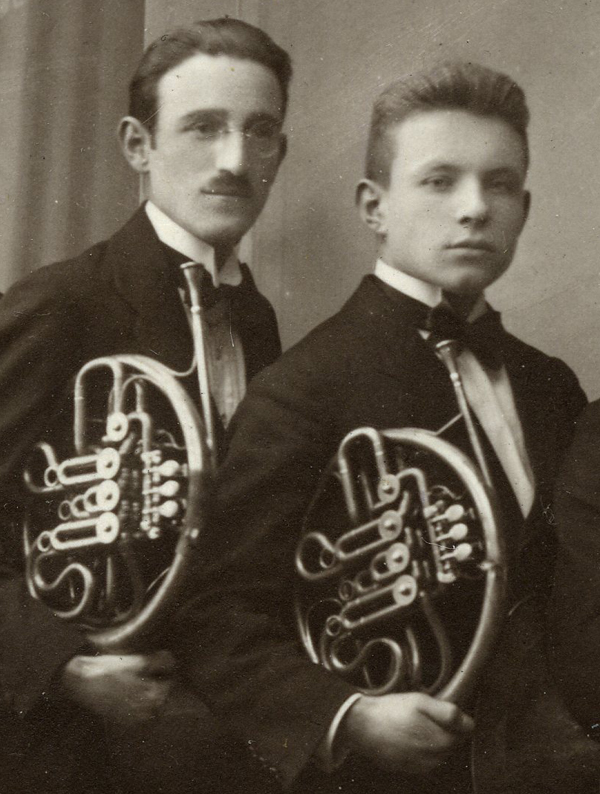
|
The two players in the center have not been
identified, however the one on the left resembles Anton Horner. It is
certainly possible for him to have been in Germany in
the summer prior to joining the Philadelphia Orchestra
in the fall of 1902. The horns they are holding
are nearly identical, except for the bracing to the
leadpipe and the extra brace to the top slide on the
horn at left. They are "compensating" double horns in
F and B♭ probably made in the workshop of Josef
Glassl, Graslitz, Bohemia (see below).
|
Josef Glassl was established in Graslitz in 1898 and
flourished there until after 1937. The compensating
double horn shown at the right is from his 1925
catalog. In a double horn there are two sets of slides
on the valves, one for the F side and the other for
the B♭. In a full double horn the F slides are longer
than the B♭, each being the same full length as they
would be on a corresponding single horn. The thumb
valve selects which set of slides are used are used
for the air path. Compensating double horns have the
same set of B♭ slides, however the F slides are
shorter stubs whose lengths are added to the B♭ slides
to make up the required lengths for the F horn. In
this case the air path is directed through both sets
of slides. These can be easily seen in the above
photos and the engraving at the right, since the short
F slide stubs are placed in front of the B♭. This
arrangement is unusual and perhaps even unique since
most compensating horns have the F slides hidden
behind the B♭ slides.
|
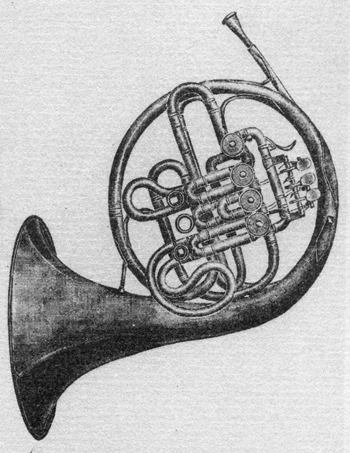
|
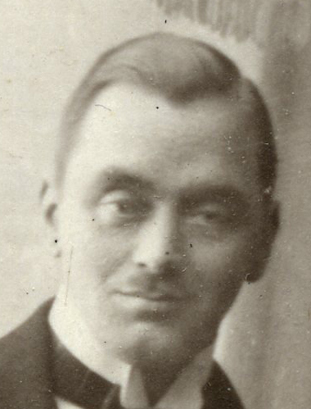
|
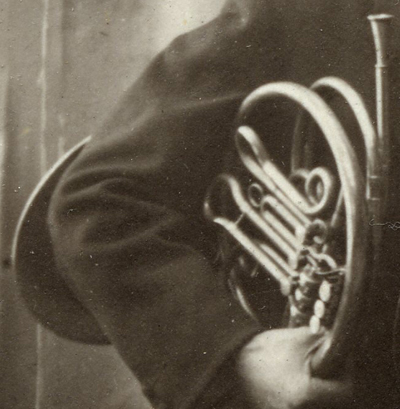
|
The unidentified player on the left in the photo is
holding an older German or Bohemian design single
horn. It is probably in the key of F and has a
terminal crook.
|
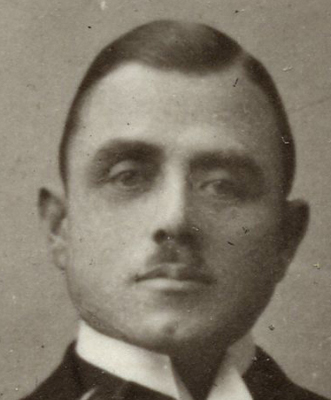
|
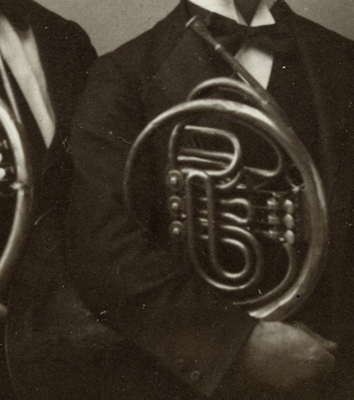
|
The unidentified player on the right of the photo
somewhat resembles Max
Hess who was still in Germany at the time, and
later came to the United States to become principal
horn of the Boston Symphony Orchestra. He is holding a
Vienna horn with rotary valves which is not known to
be associated with Mr. Hess, however.
The horn was probably made in the workshop of
Leopold Uhlmann (1806-1871) that flourished in
Vienna from 1834 to 1904, or its successor, the Erste
Productivgnossenschaft der Musikintrumentmacher Wien
(1900-1940). The traditional Vienna
horn employs dual piston valves ("Wiener
pumpenventil") but this instrument is the rotary-valve
model.
|








